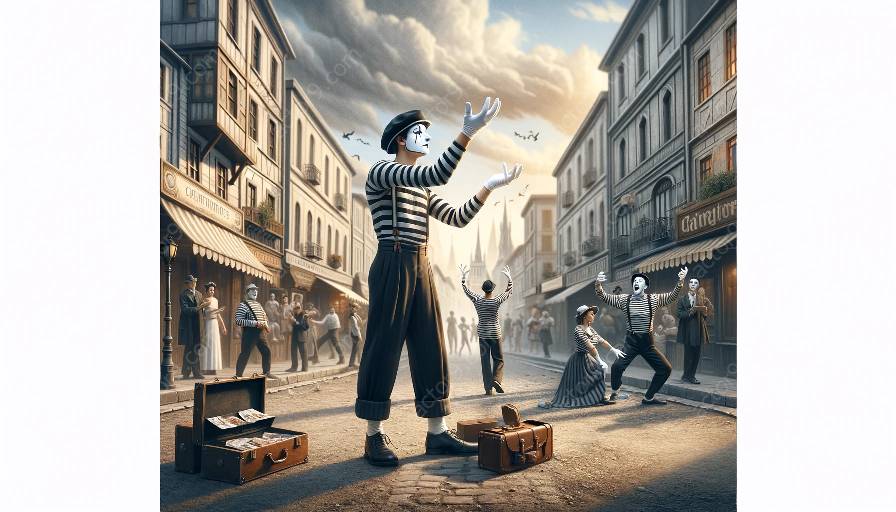Physical comedy and mime are art forms that heavily rely on body language and expression to create comedic effects. In this topic cluster, we'll delve into the intricate relationship between body language, expression, and the art of mime, exploring how they combine to convey humor and connect with audiences.
Body Language and Expression in Mime
Mime is a form of performance art that relies on the movement of the body to convey emotions, actions, and narratives without the use of speech. One of the fundamental principles of mime is the use of body language and expression to communicate and evoke responses from the audience. Through exaggerated gestures, facial expressions, and physical movements, mimes create compelling visual narratives that often include comedic elements.
The Importance of Body Language in Conveying Emotions
Body language is crucial in mime performances as it serves as the primary means of communication. Mimes utilize their entire bodies to express a wide range of emotions, from joy and excitement to sadness and frustration. The physicality of mime allows performers to connect with audiences on a visceral level, eliciting laughter through exaggerated and humorous movements.
Mime and Physical Comedy
Physical comedy is another genre that heavily relies on body language to generate comedic effects. This form of comedy often involves exaggerated movements, slapstick humor, and visual gags to provoke laughter. The use of physicality in comedy highlights the significance of body language in delivering humor, as it adds an extra layer of visual amusement to the performance.
The Role of Body Language in Creating Humorous Situations
In physical comedy, body language serves as a key tool in creating humorous situations. Performers use exaggerated gestures, facial expressions, and physical stunts to craft comedic scenarios that entertain and delight audiences. The synchronization of precise movements, timing, and expressions adds depth to the comedic effect, amplifying the impact of the performance.
The Impact of Body Language on Comedic Effect
When examining the impact of body language on comedic effect in physical comedy and mime performances, it becomes evident that the intricacies of body language significantly contribute to the humor and entertainment value of these art forms. Through intentional use of gestures, postures, and movements, performers can create comedic narratives that captivate and engage audiences.
Enhancing Audience Connection Through Bodily Expressions
Effective use of body language and expression in both mime and physical comedy enhances the connection between performers and their audience. By conveying emotions and narratives through physicality, performers can establish a strong rapport with viewers, evoking genuine laughter and amusement.
Conclusion
Body language plays a pivotal role in shaping the comedic effect in physical comedy and mime performances. The combination of expressive movements, gestures, and facial expressions allows performers to convey humor and connect with audiences on a profound level. Understanding the impact of body language in these art forms enriches the appreciation of their comedic value and the skillful artistry behind their execution.


























